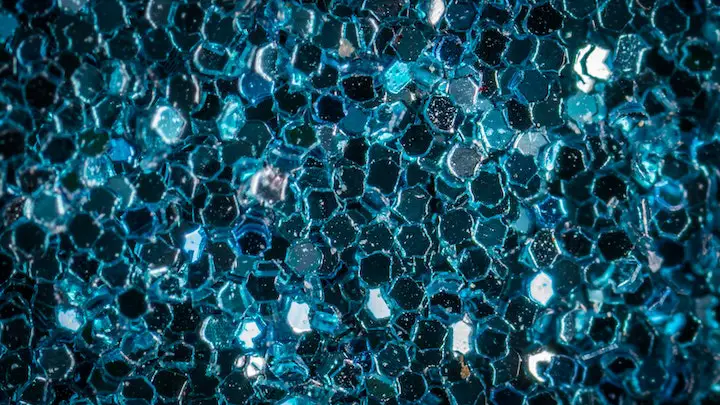Glass is an insulator and will not conduct electricity at room temperature. This is because it has no free electrons and exhibits a large band gap (space between the conducting and valence bands).
A high amount of energy is needed for glass to conduct electricity because it has a high resistance. This energy will free electrons from the oxygen atoms in glass, irrespective of their electronegative nature.
To better understand how conductivity works in glass, this guide will walk you through why naturally occurring glass is an insulator, the conditions that make it conduct, and its electrical conductivity.
You will also find out if glass readily conducts heat and its various real-life applications.
Properties of Glass
- Glass is strong and durable thanks to the strong ionic (molten) and covalent bond (solid) between its molecules. Their strength also depends on thickness.
- It has a density of 2500 kg/m3.
- It is a hard material with a hardness of 470 HK.
- The temperature coefficient of the expansion of glass is 9.10-6 K-1.
- Glass is transparent. You can see through it.
- Its modulus of elasticity is 70,000 MPa
- The specific heat of glass is 0.8 J/g/K
- The thermal conductivity of glass is 0.8 W/mk.
Why is Glass an Insulator?

Under normal temperatures, glass is an insulator because it offers high resistance to the passage of electricity. The covalent bond within its atoms is extremely stable in the presence of electric potential that keeps electrons in a static state.
Since these electrons are static and there is no vibration or collision, the glass will not conduct electricity. However, when glass is exposed to extreme heat energy, it conducts a bit.
When is Glass Conductive?
Exposing glass to high temperatures (in the form of heat) will make it conduct slightly. When heated, glass becomes softer and eventually attains a molten or fluid state.
At this point, its structures and ionic bond will collapse forcing positive ions such as Na+, K+, Ca++, and Fe+++ to become mobile and actively carry electric current from one point to another.
If you increase the heat further, these ions will respond with more rapid movement and better conductivity. However, once you eliminate the heat source, conduction stops as well. This is why a bulb becomes hot when lit or connected to an electric supply.
Glass also conducts via static charge or electricity. This occurs when you rub two insulators against each other, and they generate stationary charges.
Static charge produces electric force and can cause cracks or sparks that are not in any way harmful. The electrical force ideally attracts objects with little or no charge which is why you feel a spark sometimes when you touch a TV screen connected to a light source.
Electrical Conductivity and Resistivity of Glass
The electrical conductivity of any material is how much such material (in this case, glass) would let electricity flow through it. The opposite of electrical conductivity is resistivity.
The electrical conductivity of glass usually ranges from 10−11 to 10−15 while its resistivity ranges between 10×1010 to 10×1014. This explains why glass is mostly an insulator and a weak conductor in a molten state.
Does Fiberglass Conduct Electricity?
Fiberglass is a type of fiber-reinforced plastic that contains randomly woven glass fiber. They do not conduct electricity and are neutral to electromagnetic, cellular, and radio waves.
Does Glass Conduct Heat?
Glass is an insulator, but it conducts heat at very high temperatures. This also occurs due to the collapse of the lattice holding its electrons.
The thermal conductivity of glass ranges from 0.8 to 1.05 W/mK. These values imply that glass’s thermal conductivity is slower than that of a diamond and other strong heat conductors. Nevertheless, it conducts heat better than air, plastic, and wool.
Uses of Glass
- Expensive cups, plates, and bowls are sometimes a product of glass. They also help produce food jars, beer bottles, and cosmetics flacons.
- Engineers use building materials made of glass for setting up windows, conservatories, and other reinforcement structures.
- Home interior design applications such as mirrors, tables, lighting, partitions, and shelves appear more classy when made of glass.
- Glass is the major component of TV screens, computer or laptop screens, and smartphones.
- Manufacturing optical lenses in medicine or biotechnology also require glass.
- Radiology protects patients, radiographers, or radiologists from X-rays or gamma rays.
- The automotive industry depends on glass to produce windscreens, backlights, and other lightweight parts for aircraft and ships.
- Designing wind turbines and solar-panel glass are also glass-based operations.
FAQs
How good is glass as a conductor?
Ideally, glass is a very poor conductor of electric current. Its conductivity is usually low, even when it conducts in a molten state.
Which is a better conductor between copper or glass?
Copper is a better conductor of electricity and heat than glass. This is due to the presence of delocalized electrons.
Does glass catch fire easily?
An empty glass will catch fire easily. However, a glass container filled with water will not, because the heat produced by the fire gets absorbed by the water.
Conclusion
Solid glass (under 20°C) will not conduct electricity. However, when it is heated and molten, – ions become free to migrate from one point to another.
This will result in the conduction in glass as long as the heat source is active. Hence, it is safe to say an increase in temperature will increase the conductivity of glass.
Nevertheless, its level of conductivity remains very low compared to conductors such as copper and silver.
I hope you found this guide helpful. Like glass, wood can also conduct electricity at some point. Please see does wood conduct electricity to know when it is conductive.
Thanks for reading.

